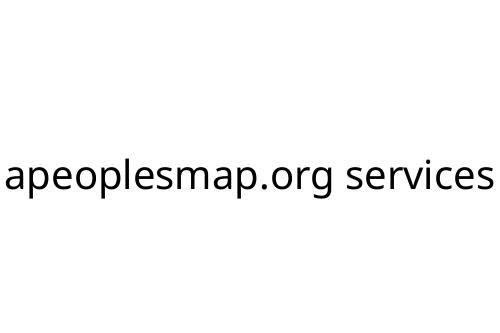apeoplesmap.org services
If you’re looking for grassroots mapping tools, you may have come across the site apeoplesmap.org. But what exactly are apeoplesmap.org services, and how can you use them? This guide covers what the platform offers, who it’s for, and practical tips on making the most of its features.
What is apeoplesmap.org?
Apeoplesmap.org is an open-source platform for creating collaborative, public maps. The service was designed with activism, community projects, and transparency in mind. People use it to document issues, events, or features that might not get mainstream attention — think tracking local polluters, mapping mutual aid, or highlighting overlooked historical sites.
The platform focuses on user-generated content. Anyone can contribute data, add locations, and annotate maps. This makes apeoplesmap.org services particularly appealing for groups without big budgets or technical resources.
Core Features of apeoplesmap.org Services
-
Collaborative Map Creation: Create maps that anyone can help update. It’s straightforward — users add points, notes, images, and links right from their browser.
-
Custom Categories & Data: Organize map content using unique tags and categories. This helps users sort through data and focus on what matters to their own project.
-
Privacy & Security: Users can choose how public or private to make their maps. Some use the service for sensitive topics, so privacy features are a critical part of the offering.
-
Open-Source & Free: There’s no paywall or subscription model. The platform’s open-source code also means you can adapt it for your organization if you have specific technical needs.
How apeoplesmap.org Services Stand Out
Unlike mainstream mapping tools like Google Maps, apeoplesmap.org doesn’t center commercial interests. That means no advertising, no data harvesting, and no restrictive data policies. The focus is on empowering users and communities with mapping tools on their terms.
The interface is deliberately simple. You won’t need specialized GIS training to get started. It’s possible to set up a map in minutes and immediately begin adding points of interest.
Who Benefits Most from These Services?
-
Activists and Advocacy Groups: Document and share issues like environmental hazards or instances of police activity with ease.
-
Community Organizers: Map resources, needs, or events for local residents.
-
Researchers and Journalists: Crowdsource data gathering, track patterns, and visualize findings.
-
Educators: Create interactive learning tools or project-based assignments involving place-based data.
Pros and Cons
Pros
- Free and open-source
- User-friendly and easy to get started
- Prioritizes privacy
- Designed for grassroots and community needs
Cons
- Fewer advanced mapping features than professional GIS tools
- Support relies on user community
- Smaller user base than bigger platforms
Getting Started: Tips for New Users
- Explore existing public maps to see examples and gain inspiration.
- Start small: build simple maps and experiment with the annotation tools.
- If privacy is a concern, use the platform’s security settings to manage access.
Bottom Line
Apeoplesmap.org services offer a practical, low-barrier way to make community maps and share information. While it’s not a fit for every mapping need, it fills an important gap for users who want honest tools built for the public good. If collaboration and transparency matter to your project, apeoplesmap.org is worth exploring.




